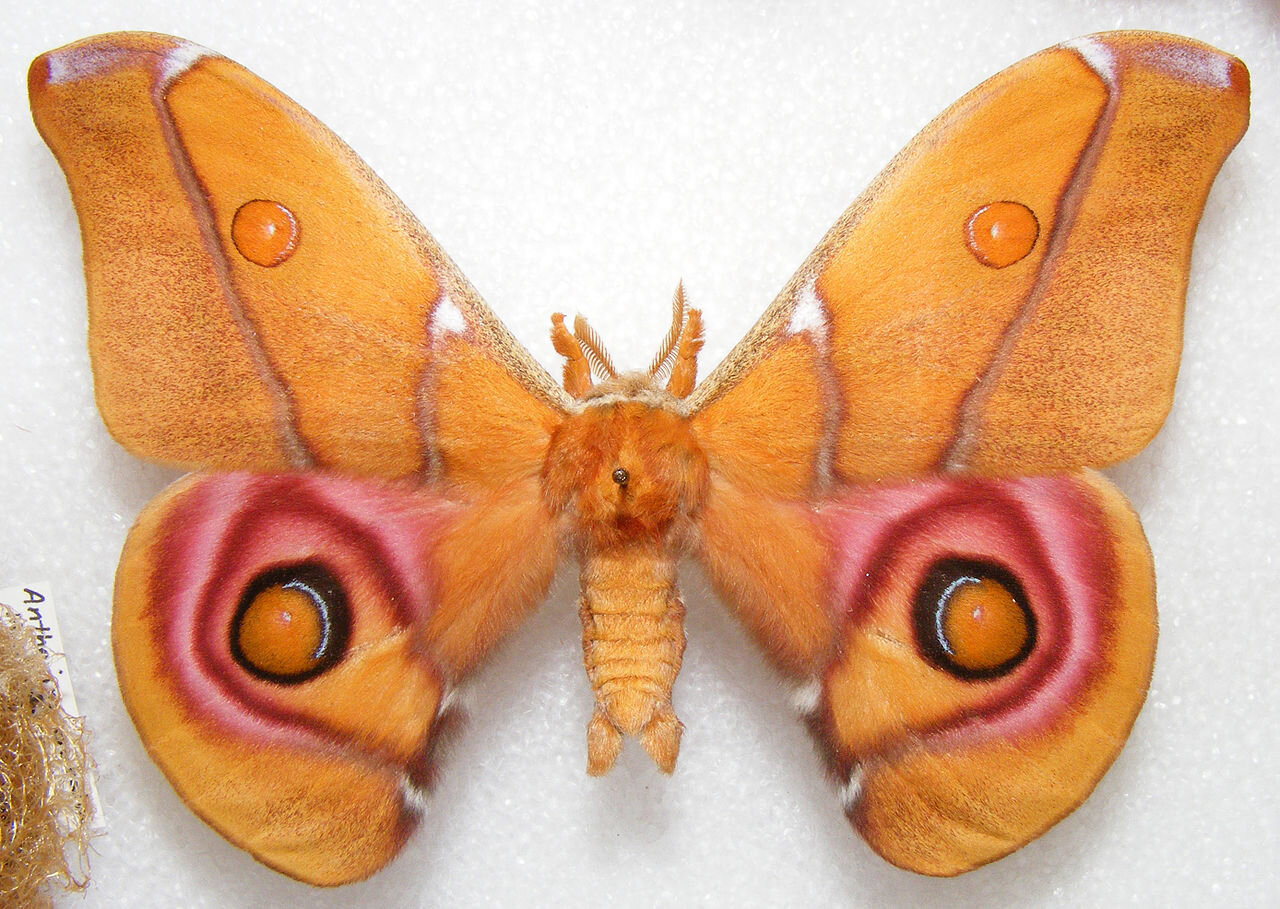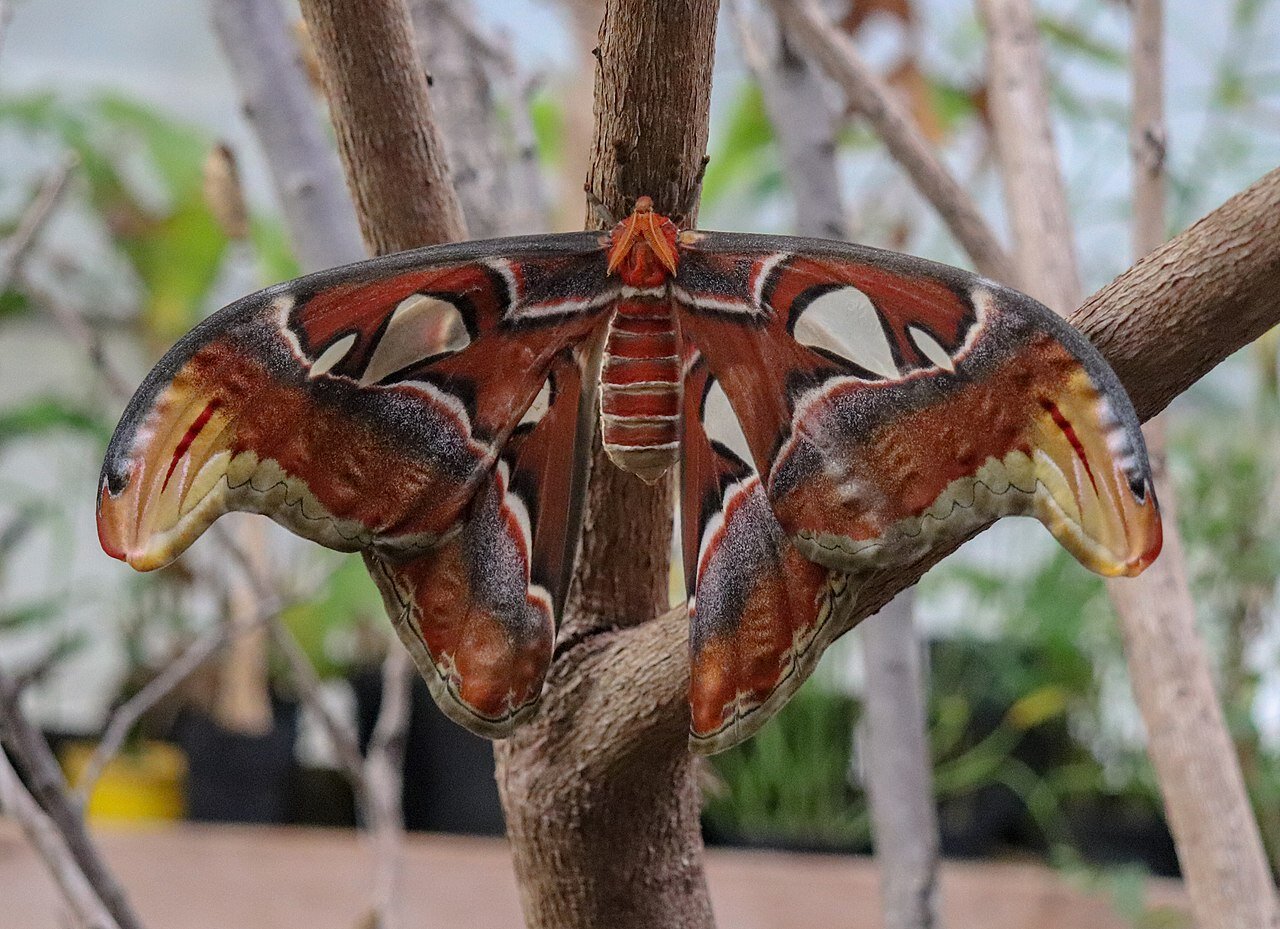PICTURED: The Luna moth, or Actias luna, uses its twisted forewings like a radar jammer. A horseshoe bat, a moth predator. PC: Dale Sutton/Bat Conservation Trust. Retrieved from The Guardian.
Story at a glance…
-
Moths and bats are in an evolutionary arms race.
-
Bats use a form of biosonar called echolocation to find prey at night, while moths have evolved several ways of staying hidden.
-
From head to scale, as beautiful they are, moths are covered in sonar-jamming materials and strategies.
Earth has played host to some fascinating evolutionary arms races between predators and prey; perhaps none more fascinating than the deadly dance in the darkness between the hunting bat and the moth.
For most of us, when we look at a moth we see a beautiful symbol of the wonders of nocturnal nature. Their furry wings seem at times like ballroom gowns, and they fill fantasy arts and minds like that of painter Josephine Wall, who will paint a moth into just about every nighttime scene, or in the Lord of the Rings films when the wizard Gandalf uses moths to communicate with giant talking eagles.
However almost every part of the exterior of a moth is designed to counter or jam the biological sonar of the predators that fancy them not for their gowns, but as their dinner.
Another symbol of the night, bats evolved echolocation as a way of hunting in total dark. Like the special forces units in modern militaries, bats know that nighttime doesn’t favor most animals’ senses. By hunting at night bats not only escape the watchful eyes of predatory birds, but are able to hunt insects when their prey is at their least aware.
One established theory for the evolution of this remarkable ability in bats, which paired a larynx muscle capable of producing a click at over 100,000 hertz, with a set of inner ear muscles sensitive enough to retrieve this sonar from the environment as it bounces off of objects, is that it evolved first in microbats, and later in megabats, or else there was some species in between that were lost.
Regardless of how it evolved, it indelibly left its mark on the family Saturniidae, in which one can find the largest of the moth species, and everything from their fur, to their scales, to their elongated tails help defend the insect from the seeking sounds of the bats.
PICTURED: The Suraka silkmoth, or Antherina suraka. Lacking the twisted tails of the Luna moth, the Suraka silkmoth has special camouflage hairs that absorb sound rather than reflecting it. CC: Texas A&M CC 3.0.
PICTURED: A very moth-heavy painting. “Once in a Blue Moon” by Josephine Wall. PC: Josephine Wall.
Sonar jamming
The first concept that moths may have some sonar jamming came in the form of a hypothesis that elongated hindwings on some saturnids like Luna moths acted as such based on the way the tail-like wings terminated in two screwed-up tips. This seemed likely as forewings are not needed for powered flight by the moth, and like some lizards can be completely done without in some cases.
In 2016, in the The Journal of the Acoustical Society of America researchers bombarded the Luna moth’s hindwing tails from all angles with ultrahigh frequency sounds, and then used specialized equipment to map the sonic environment. They found the tails themselves were very weak in returning sonar, but that “the distinctive twisted morphology of the tails create persistent echoes across all angles of orientation, which may induce erroneous sonar target localization”. In other words, like the lizards mentioned earlier, the bat only gets the tail, not the moth.
Thomas Neil, a bioacoustics researcher at the School for Biological Sciences at the University of Bristol was part of a team that published two papers in 2020 showing how it wasn’t just down to the hindwing tails, but the material covering the bodies of some moths that can deflect the sonar.
“Many moths are endowed with ultrasound-sensitive ears that serve the detection and evasion of echolocating bats,” Neil et al. explain in one such paper. “Moths lacking such ears could still gain protection from bat biosonar by using stealth acoustic camouflage, absorbing sound waves rather than reflecting them back as echoes”.
“Much of the thorax of moths is covered in hair-like scales, the layout of which is remarkably similar in structure and arrangement to natural fibrous materials commonly used in sound insulation,” they wrote.
Indeed, they found the hair-like scales of two earless moth species, the Suraka silkmoth and the promethea silkmoth, gave them a significant survival advantage by absorbing sound between 20-60 kilohertz.
PICTURED: Atlas Moth or Attacus atlas, has rippled and folded sections at the tips of its forewings, which are actually the most powerful sonar jammer of all. Taken at the Stratford Butterfly Farm, Stratford-upon-Avon. PC: Vauxford. CC 4.0.
Head over Hind
Another paper by Neil et al. showed that not only can the hindwings and the fur of a moth be sonar jamming, but the wings can as well. Without compromising the light and ultrathin structures that make up the moth’s wing membrane, moths evolved a nifty coat of scales that act as an acoustic-absorbing metamaterial. The scales individually can do very little, but when fitted together over the wings can absorb remarkable amounts of sound; as much as 72% at 78 kilohertz.
Yet when there are hungry bats around, it pays to be thorough. Published only yesterday in Cell, Neil and his colleague from previous research Marc Holderied proved that certain silkmoths have a fourth option for throwing echolocating sonar waves off their trail.
“We noticed that on many of the larger silkmoths, the forewing tips are actually folded and rippled, in a way not to dissimilar to the hindwing decoys we looked at earlier,” said Neil in a video abstract of his paper.
Using a variety of ultrasonic waves, Neil and Holderied tested the forewings of an Atlas moth from 97% of all possible directions in a 3D space to see how thoroughly the ripples and folds reflected sound.
PICTURED: In this graphical abstract taken from the study, it shows an acoustic map of the strength of sound wave reflection off of the body and wings of the moth. The reddish zone indicates where it was highest, around where the forewing decoy was.
The forewings of an Atlas moth are much better it turns out than the twisted hindwing tails of the Luna moth, providing at best a 20% higher likelihood of protecting the vulnerable thorax of the moth by distracting a bat during an attack.
Two folds at the very tip of the forewings created a space of around three ninety-degree angles, in which the echolocation ping-ponged before being shot out at 180 degrees around the end of the wing. The ripples which are much easier to see with the naked eye act as a series of hemispheric reflectors which sent the sound out the way a smartphone becomes louder when placed inside a bowl.
The forewings are much more rigid and durable than the moth’s thorax, so its likely an attack would only knock the moth off course rather than damage the wing too much. Of the 72 species of saturnids examined, 36 of them sported either folds and/or ripples in their forewings.
Almost all 36 of these were very large, which the researchers put down to the fact that in order to protect the thorax by drawing the bat’s attention, the decoy on the forewings would have to be far enough away by distance to ensure the bat would not just attack both decoy and thorax.
Who knows how much more advanced these methods of acoustic camouflage will become if the two species are left alone long enough. There are moths with reflective scales on their wings, ultrasound-sensing ears, sound absorbing fur on their thoraxes, and decoys on their fore or hindwings.
It’s truly testament to nature’s mastery of form and function that moths can be so captivatingly beautiful, even though almost everything one sees about them, from their fur and colors to their wings and tails, are actually part of a unique sonic defense mechanism.







